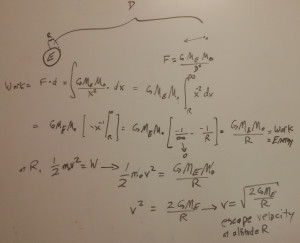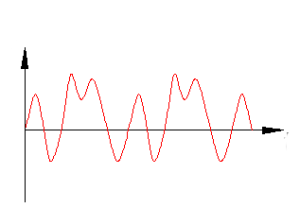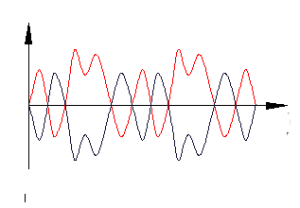I loved music and was fascinated with audio electronics since I was a little kid. Later I became interested in the physics of sound.
I bought my first audio component in the 1980s in college, a Harman Kardon integrated amplifier. It was simple and cheap, had no tuner, only 40 WPC output, but it did have a phono amp (MM only) and decent gain stage. To find good speakers, my friend Shawn and I visited the local audio store and listened to several different speakers (Klipsch, Polk, and a few others) with a variety of music. We both liked the Polk 10Bs best. They had the smoothest least colored sound for my limited budget. My musical taste at the time was about half classical, half rock.
Back in those days digital audio and headphones were not an audiophile option. Good headphones simply didn’t exist and digital audio was so new, consumer CD players were expensive and tended to have poor reproduction of high frequencies and transient response. Because of this, there were no good cheap paths to high quality sound, like we have today.
I didn’t have a turntable, they were too expensive. But I did get a good CD player, an Onkyo DX-530 which was one of the first CD players to use oversampling, which improved the high frequency and transient response by enabling more gradual slope Nyquist filters.
This little system lasted me through college with many hours of satisfying listening. Then, my junior year in college, the local audio store went out of business and I got their used demo pair of Polk SDA-2 speakers. This was a big upgrade from the 10Bs, and the price was so good it was almost an even trade when I sold the 10Bs.
After graduating from college I was ready for a decent turntable. I visited the local audio store and auditioned a couple of different turntables & cartridges for several hours, picking a Thorens TD-318 MK II with an Ortofon MC-3 high output MC. That was in 1991. That HK integrated amp only had a low-gain MM phono amp, and my budget didn’t allow for a low ouput MC. The high output MC was a little on the bright side, but it had the smoothest, least colored sound compared to the MMs.
This little system lasted me for several years, until around 1995 I got a new job and promotion and my budget was ready for an upgrade. I auditioned a couple of different power amps and pre amps at the local audio store and ended up taking home an Adcom 5800 power amp with a Rotel RC-990BX pre amp, which had a dual-stage phono amp, so I could now try low output MC phono cartridges. And I had enough power to fully drive those Polk SDA-2 speakers.
At this time, digital was improving but to my ears, good vinyl still had more natural sounding high frequencies and transient response. But only good vinyl – like heavy 280-220 gram pressings, half-speed masters, etc. I started collecting MoFi half-speed masters, Cheskys, Audioquest, Telefunken, Wilson Audio, Classic, Water Lily, and other audiophile vinyl. I didn’t have the budget for much, so I carefully selected and treasured each new addition to the collection.
In the late 90s I replaced my Onkyo DX-530 with a Rega Planet CD player. I read so many good things about it, I thought it must be great. I never really got into this CD player, I think the old Onkyo was actually better. The Rega had a distinct sound that grabbed one’s attention at first. But upon further listening it was to my ears, congested and the high frequencies were all wrong. I ended up selling the Rega about a year later. It was so popular, it was easy to sell. I replaced it with a Rotel RCD-1070. Nothing special, but a solid well engineered good sounding player.
Fast forward a few years to 2000, when I sold my first startup (Octane software) and was ready for another audio upgrade. I already had reference quality amplification so this time it was the speakers. I visited the local audio store with my best albums and spent all day listening to every fine speaker system they had. I also did a bunch of research in audiophile channels. I ended up picking Magnepan 3.6/R speakers, as they had the most natural, linear, uncolored midrange and treble of any speaker I listened to. The Adcom 5800 had plenty of power with enough refined clarity to make these excellent speakers really sing.
About a year later I designed and built my own ladder stepped attenuator to replace the preamp. This added a level of clarity and transparency to the system — no active preamp is cleaner than a single metal film resistor in the signal path! And I learned a little about analog audio circuits, grounding and soldering. Now I didn’t have a phono amp anymore. I did a bunch of research and picked up a DACT CT100, which is an excellent reference quality flexible phono amp, but just a circuit card. I designed and built a power supply for it (dual 12V batteries), with a small chassis, cabling & grounding & connectors. I was delighted with the sound, a noticeable upgrade from the Rotel pre amp’s phono amp, which was quite good to begin with.
This new level of transparency revealed the limitations of the Rotel CD player so I looked for alternatives, knowing that DACs were constantly improving. I ended up with another Onkyo, a DX-7555. It had a more refined sound with more natural midrange voicing.
After we moved from Orcas Island to Seattle my listening room changed. I used test tones, microphones and measurements to tune my new audio room. I built floor-to-ceiling height 22″ diameter tube traps for the rear corners, RPG acoustic foam 4 layers thick strategically located on the wall behind the listener, careful room and speaker arrangement, and ended up with a great sounding room that was within 4 dB of flat from 40 Hz to 20 kHz. It wasn’t perfect though. There was a small rise in the mids around 1 kHz, likely inherent to the Mag 3.6 speakers, and the lowest bass octave was from 6 to 12 dB down. Notwithstanding these limitations, it was a great sounding room.
I kept this system for about 10 years, from 2005 to around 2015. Then I replaced the ladder stepped attenuator with an Oppo HA-1 DAC, using the digital outputs from my source components. And I got a Behringer DEQ 2496 and used its pure digital parametric EQ to tame the 1 kHz bump and lift the bottom bass octave. This put the in-room system response within 3 dB of flat from 30 Hz to 20 kHz, which is comparable to a good recording studio. The sound is fantastically natural: detailed yet smooth and not bright, bass is deep, yet controlled and fast, natural voicing through the mids with seamless transition to high frequencies.
Finally, in Jan 2018 I sold my turntable, vinyl, and related analog equipment. I just wasn’t using it anymore, since I had all those recordings on digital, and the sound quality of digital had improved so much, while great LPs do sound great, I no longer felt that they sounded any better than great digital.




